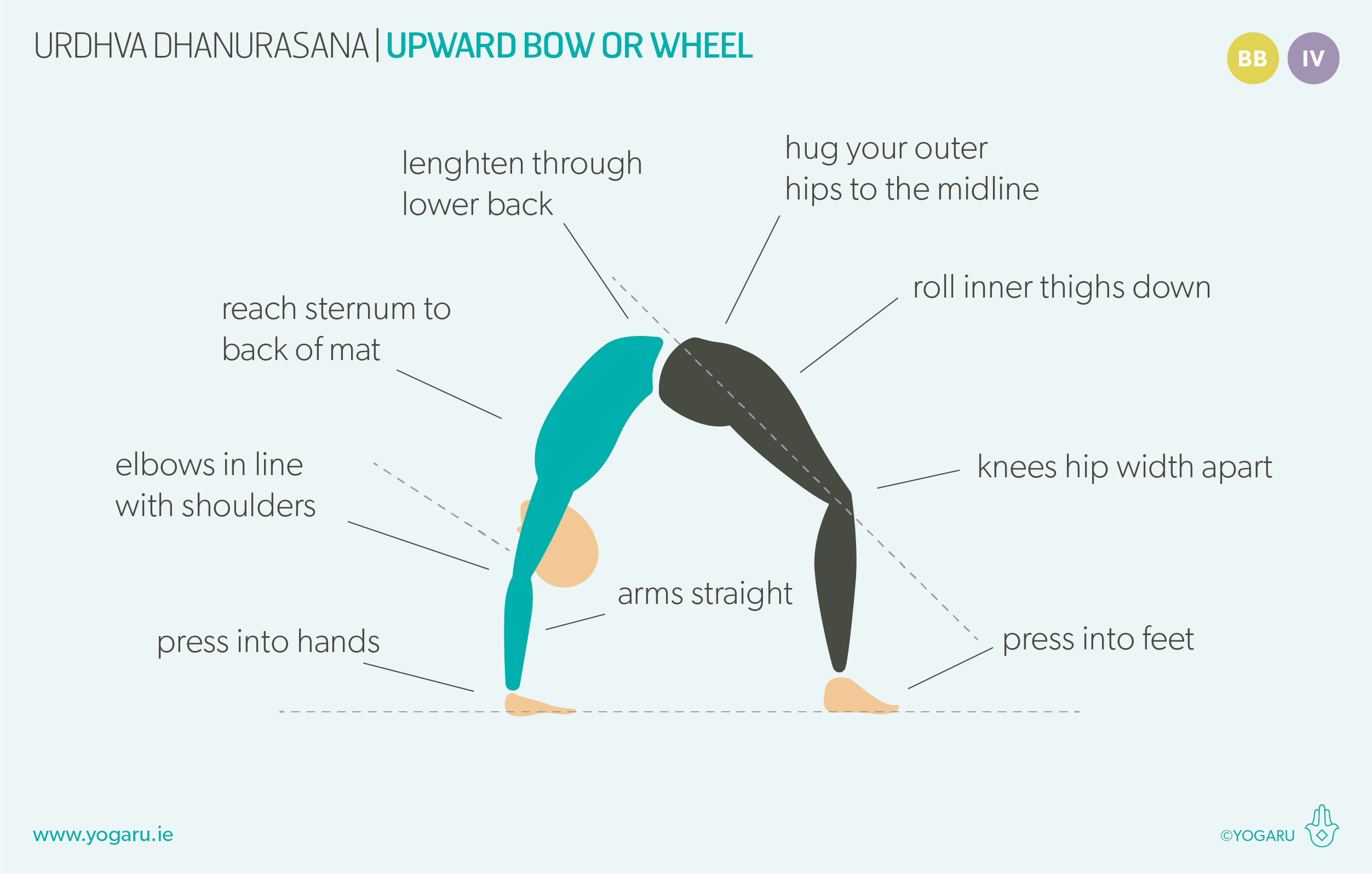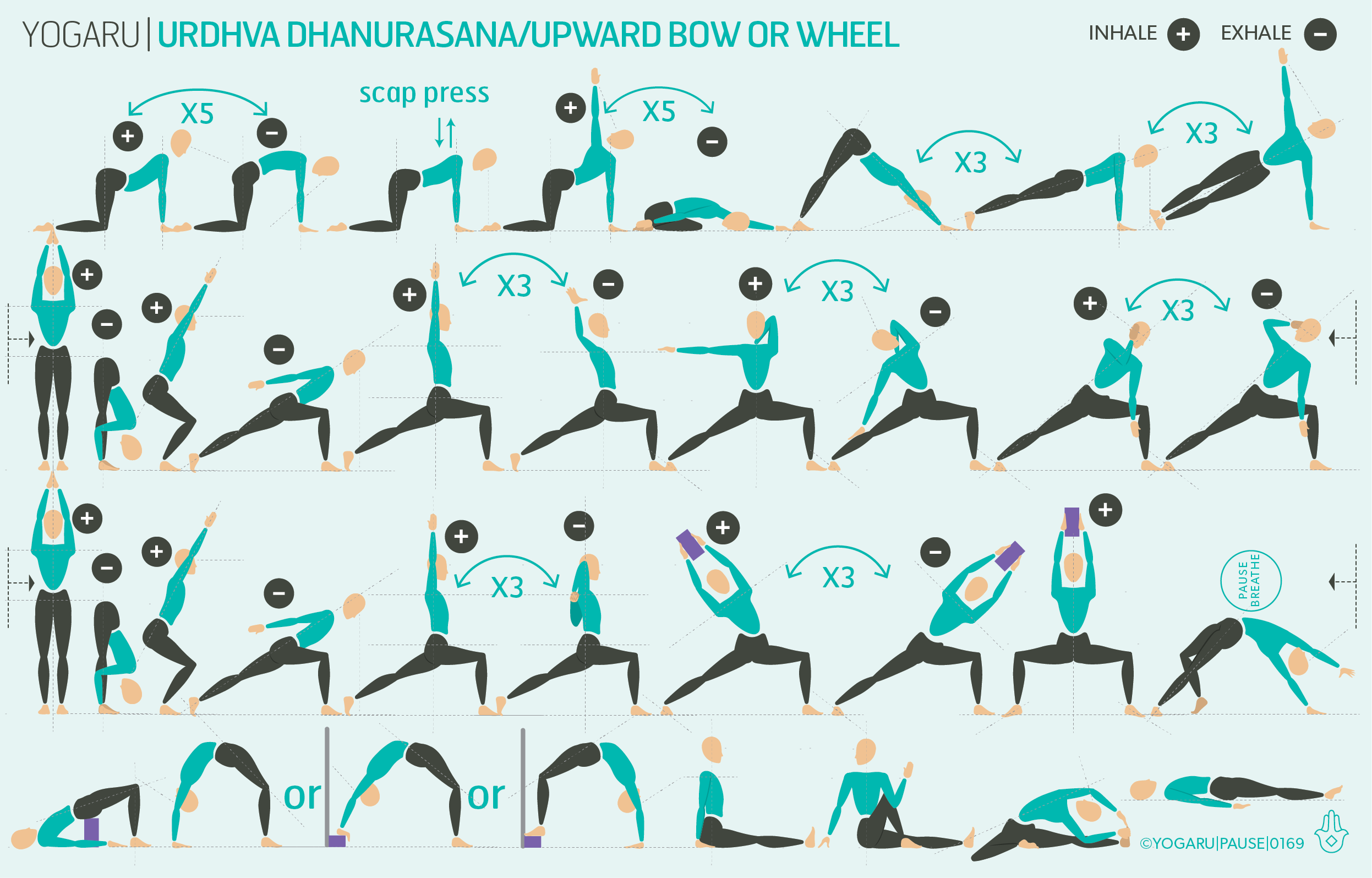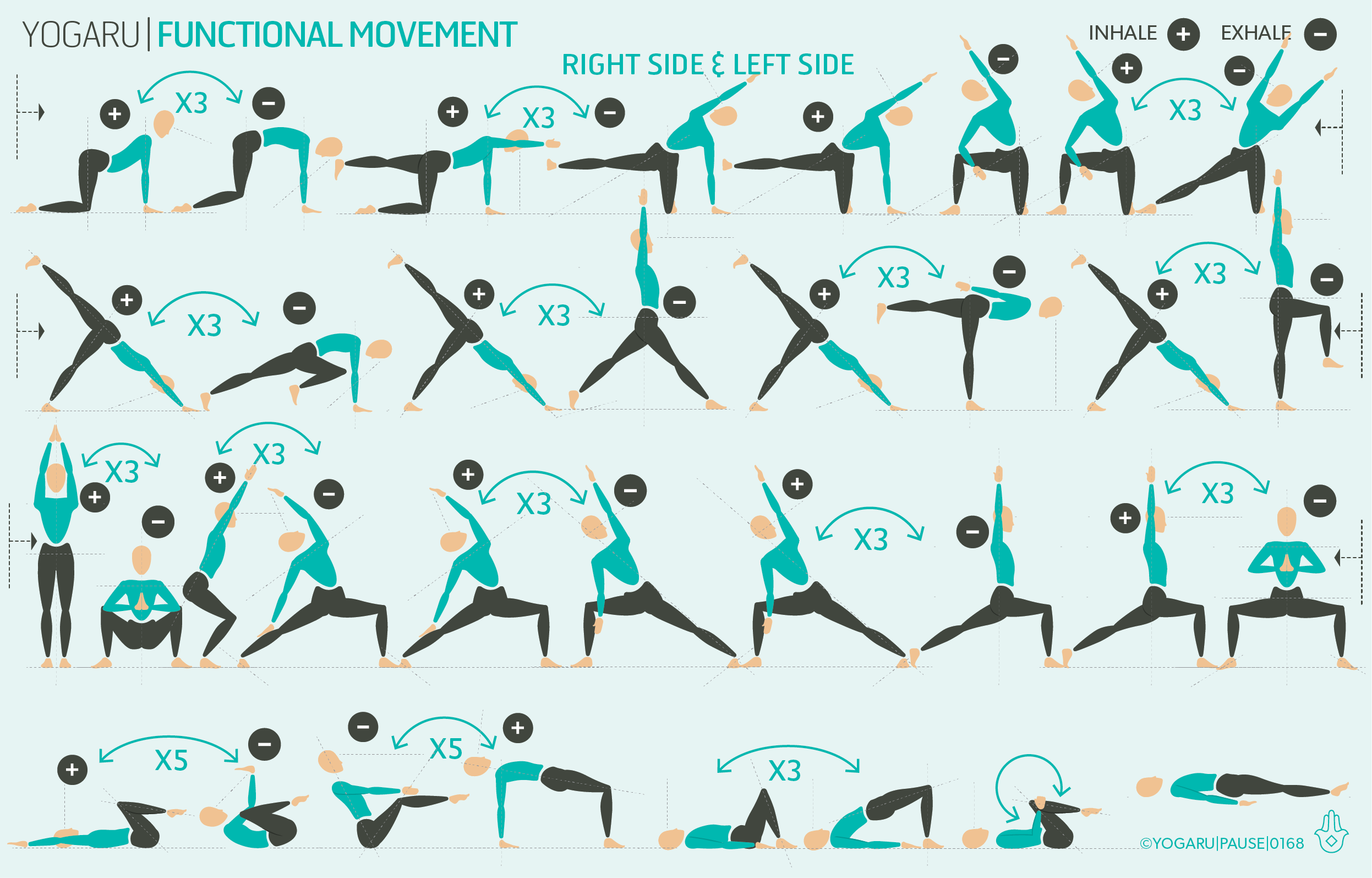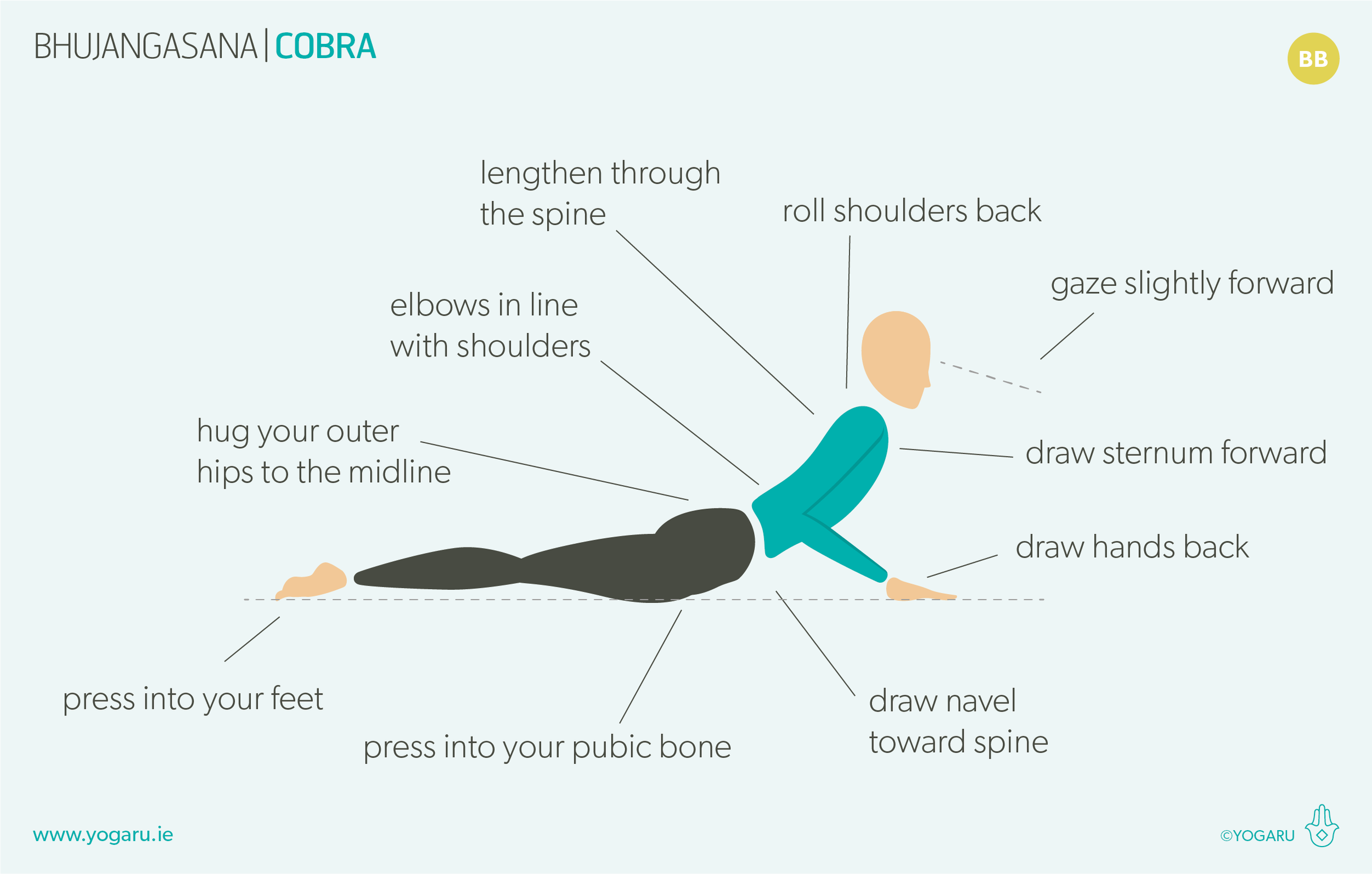PROP AWAY YOUR FEARS
Urdhva Dhanurasana/Upward Bow or Wheel is a challenging pose for most yogis. Considered one of the bigger backbend poses it requires open shoulders, chest, hip flexors, and a bit of gusto to lift yourself into the pose. You may think that your shoulders and hips are too tight for Urdhva Dhanurasana/Upward Bow or Wheel, but there is plenty you can do to prepare for the pose and give you a better chance to explore the pose. This sequence breaks down the components of Urdhva Dhanurasana/Upward Bow or Wheel and gives you plenty of versions of the pose, so you can enjoy all the lovely benefits of this peak pose even if it is not part of your practice. Props are a great addition to Urdhva Dhanurasana/Upward Bow or Wheel, they can be used to bring the floor up to meet you and reduce the extent of stretch required for the pose. They can be used at a wall under your hands if your shoulders are not quite reaching the ground or under your feet at a wall if your hip flexors are limiting your ability to lift up. Both theses versions are described below.
What makes it so challenging to the shoulder joint is that it requires quite a complicated series of movements in the shoulders joint (strong shoulder flexion, scapular elevation and upward rotation), and in this position we are asking the shoulder to lift up and hold our body weight. The hips can also complicate the lift for you. If the hip flexors are tight, and pulling the pelvis into anterior forward rotation, it makes it much harder to recruit the lifting muscles at the back of the hips, and to distribute the backbend throughout the whole spine when you are in the pose.
THE BENEFITS OF URDHVA DHANURASANA/UPWARD BOW OR WHEEL
Urdhva Dhanurasana/Upward Bow or Wheel strengthens the spine, hamstrings, glutes, adductors and shoulders. It stretches the arms, shoulders, chest, core, quads and hip flexors. This lovely full expression of a backbend builds strength and stamina, aids digestion, is energising, eases stress, tension, anxiety and depression. It also helps expand and the breath, promoting healthy lung capacity and ease symptoms of asthma and sleep apnea.
EXPLORING URDHVA DHANURASANA/UPWARD BOW OR WHEEL IN YOUR PRACTICE
There are many different ways to approach Urdhva Dhanurasana/Upward Bow or Wheel if you are working with tightness in the shoulders, hips or struggle to find enough strength in your arms to lift up. The feet and hand position have been the topic of many yoga debates. Where once the theory was that it was best alignment practice to have the hands shoulder width apart and feet hip width, now the conversation has shifted more appropriately to ‘what does your body need to help you lift and hold’. If you have tight shoulders it can help to have the hands slightly further than shoulder width and the palms slightly turned out, similarly if you have tight hip flexors having the feet slightly further than hip width and feet slightly turned out it can help too. These two variations can also help if you struggle to find your shoulder or hip strength to lift up.
In the last line of the sequence you will find different versions of Urdhva Dhanurasana/Upward Bow or Wheel. Take each version as stepping stones and be proud and happy with yourself to stay at the step you are most confident with. Explore the two variations above, adding bricks under hands or feet or playing around with hand and feet position, as required for your body type.
ALIGNMENT CUES
As mentioned above props are king for Urdhva Dhanurasana/Upward Bow or Wheel. Below are three versions of the first step to the peak pose.Play around and see what works for you and your unique body.
Have a read of the tips below and either print out the sequence or save it onto your device:
No bricks. Lie on your back, knees bent, feet parallel, hip width apart or slightly wider if you ahem tight hip flexors. Bend your elbows, place your hands on the ground beside your ears, or slightly wider if you have tight shoulders, fingers point towards your shoulders, elbow in line with your shoulders. Press firmly into your hands and feet.
Bricks under hands. Bring the short edge of your mat to a wall. Place the long edge of two bricks against the wall shoulder width, or slightly wider, apart. Lie on your back, head between the bricks, knees bent, feet parallel, hip width apart. Bend your elbows, place the palm of your hands on the bricks, fingers curled over the edge of the brick, pointing towards your shoulders, elbow in line with your shoulders. Press firmly into your hands and feet.
Bricks under feet. Bring the short edge of your mat to a wall. Place the long edge of two bricks against the wall hip width, or slightly wider, apart. Lie on your back, knees bent, place your feet on the bricks, feet parallel or slightly turned out. Bend your elbows, place your hands on the ground beside your ears, fingers point towards your shoulders, elbow in line with your shoulders. Press firmly into your hands and feet.
Exhale, lift your hips up and come onto the crown of your head, inhale here. Exhale, lift your head up and straighten your arms.
Knees hip width apart, hug your outer hips to the midline. Roll your inner thighs down, reach your chest towards the back of your mat.
To come down tuck your chin in and slowly come down to your head, then lower your hips down to the ground.
To save the images for personal use click and hold down the image until the ‘save image’ option appears; on Mac hold down ‘control’ and click the image to get the option box; on PC right click on the image to get the option box. Scroll down in the ‘option box’ and click ‘save image’.
Ruth Delahunty Yogaru







